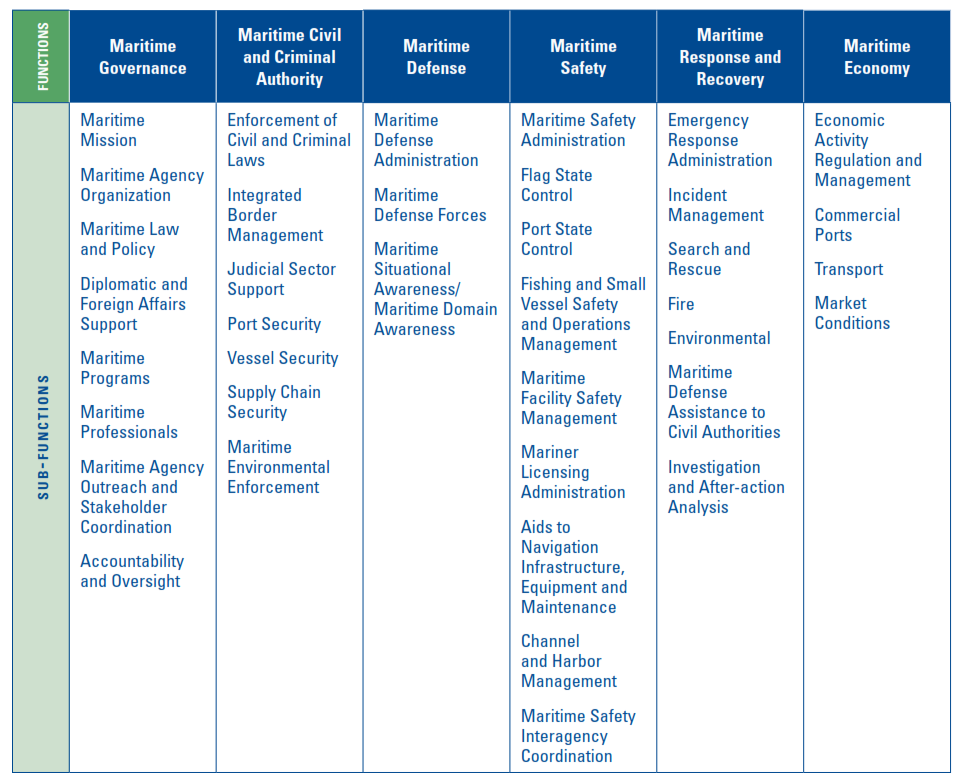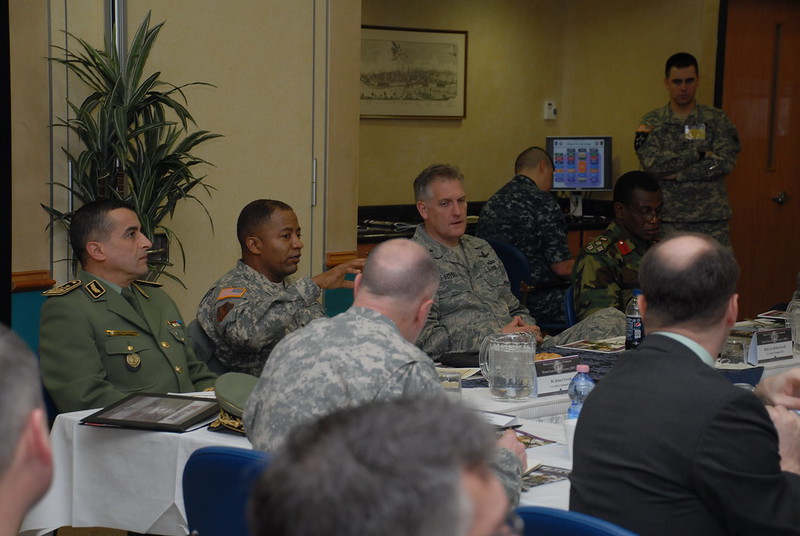Recognizing that capacity building in the maritime security sector lacks guidance and is too often conducted in an ad-hoc manner, in 2010 several U.S. government agencies, including USAID, published the Maritime Security Sector Reform (MSSR) Guide.
A focus on functions
The goal of the guide is to assist countries in assessing their maritime security sector and reforming it. According to Tom Kelley (2014), former assistant secretary of the US Department of State, the MSSR guide intends to illuminate “the interdependency of the Maritime, Criminal Justice, Civil Justice and Commercial sectors and identifies the functions that any government must perform in order to deliver what its citizens might recognize as maritime security.” The guide specifies so-called “functions”, that is groups of related activities. Six main functions are outlined (Governance, Civil and Criminal Authority, Defense, Safety, Response and Recovery and Economy). These are then further divided in “sub-functions”.

The MSSR Guide provides a useful overview over the functions that a maritime security sector needs to perform. It provides an important thinking tool as it provides a list of activities that are implied in the provision of maritime security. In consequence, it has been widely used.
What’s there to dislike?
The guide is, however, problematic in three senses. Firstly, the way that functions are categorized in different pillars is suggestive of an idealized governance structure that might not be appropriate in every political context, as it does not acknowledge existing political situations, traditions, and political cultures as well as national priorities. Secondly, the guide recommends quantifying the functions in order to assess maritime security sectors quantitative assessment. This renders assessments to be a technical problem, rather than a matter of political decision-making. Thirdly, although the guide does not directly provide how the functional structure should be translated into actual reform projects. The guide is prescriptive and risks to be taken as a blue print and idealized norm for how a maritime security sector should be structured.
Photo by US Army – Africa, Senior Leadership Conference 2011

